2. Courtship and Rivalry - Bird Calls and Song
Bird Song and bird calls deserve a section all of their own. They are used to attract a mate, deter rivals and warn of danger. Bird song can often be complex and involve wide repertoires. It is also species specific and one of the markers that separates one species from another.
Passerines - The Song Birds
Passerines are the singers of the bird world and some are remarkably successful. One passerine with a great repertoire of beautiful and complex song dear to my heart is the Oriental Magpie Robin and I often wake to its soothing melodies first thing in the morning. Like its European namesakes, the magpie and the robin, it is very territorial and aggressive and like all bird song, its repertoire serves as a warning to rivals as well as a seductive call to a potential mate.

Oriental Magpie Robin
Courtship and Song
Singing is learnt by chicks from adult birds and may take months or even years to perfect. and it takes considerable energy to perfom well. The song repertoire also appears to indicate fitness in some species. Parasites and diseases may impact on song quality and rate and therefore inform the female of the health of her suitor. The cleverest and strongest performers attract the females and carry on their genes to the next generation. Research with female canaries and barbary doves reveals that their ovaries actually respond to a male's song by swelling and secreting hormones that ensure they are ready for mating and reproduction. I suspect the magpie robin in this recording is a Frank Sinatra of the bird world with an equally devastating affect on the ladies. Photographed in Chiang Rai, Thailand.
Rivalry and Song
Another major function of bird song is to defend territory and song may warn rivals not to mess with them. Territorial birds will compete using song to delineate territorial boundaries. The quality and strength of the song indicates how formidable a rival is and perhaps prevent a damaging physical confrontation.
The common iora is another passerine with a melodic song but in contrast with the magpie robin it is a far less complex.
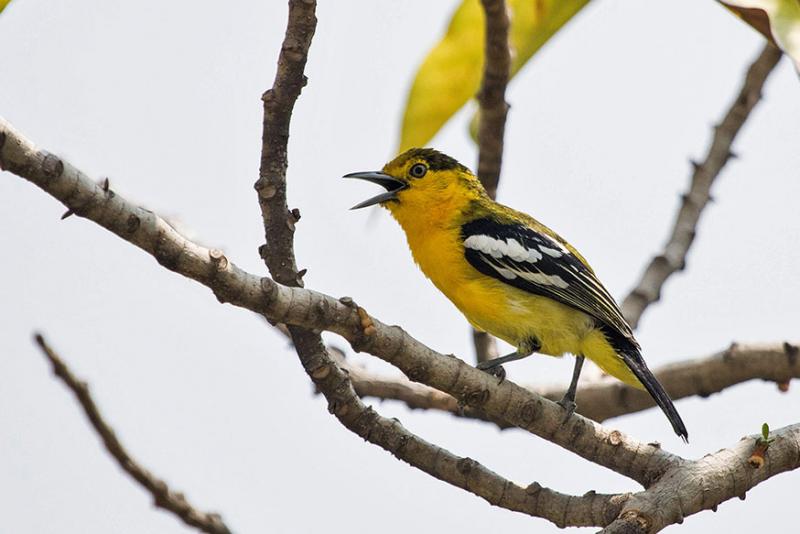
Common Iora
A beautiful song but repetitive. This common iora is a regular performer in central Bangkok and despite its small size has a poweful voice indicating is an excellent potential mate.
Alarm Calls
All birds also have an alarm call warning of danger which is different from their mating or territorial call.
Common Iora Alarm Call
A bIrd will use an alarm call to warn of danger to other members of the species particularly if there are threats to eggs or chicks. It is also a warning to other species. An alarm system amongst birds of different species can spread very quickly in a wave that can reach one hundred miles per hour, faster than a raptor can fly!
Non Passerine Calls
Passerines make up around 60% of the world's species. Not all passerines have beautiful songs and not all non passerines are devoid of musicality and some calls can be haunting.
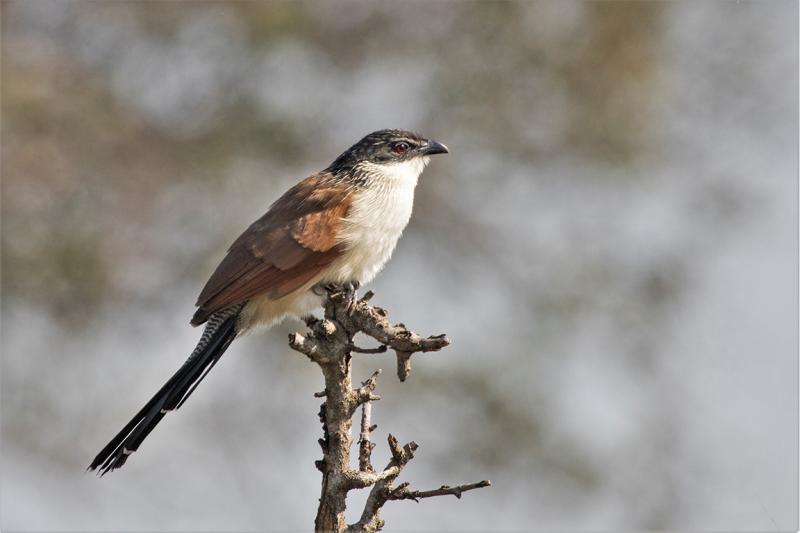
Burchall's Coucal
The distinctive call of Burchall's Coucal is not uncommon in sub-Saharan Africa. It is this non passerine's way of attracting a mate and proclaiming its territory.
Like the Burchall's Coucal, The Asian Koel is a member of the cuckoo family (Cuculidae) and a brood parasite. Like the name cuckoo it is "onomatopoeic" and the word when pronouced resembles the call of the Koel.
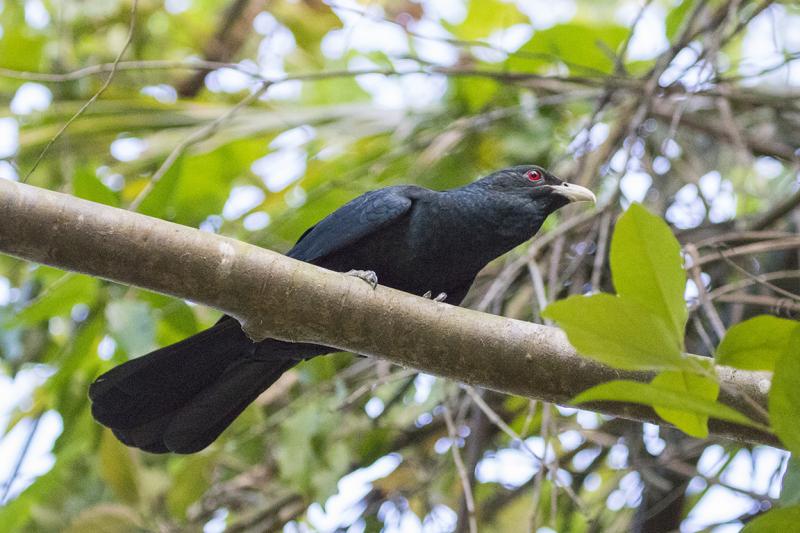
Asian Koel Male
The call of the male Asian koel is loud and repetitive and during the mating season calls between rivals travel long distances. An early riser, or an insomiac, you can be awakened by a nearby koel at 4.00 am in the mating season and the territorial auditory battles that ensue can seem interminable.
The female koel has a completely different call which is equally strident but less persistent. The female also has a very different, more cuckoo like appearance.

Asian Koel Female
Interestingly most woodpeckers communicate differently from other passerines. Their songs are less distinctive and they attract mates and defend their territory through drumming. They have a variety of patterns, time intervals and volume which are not only territorial and related to mating but also warn of danger, summon help at the nest and tell other members of the species about a food source. The loudness and assertiveness of the beat indicates the male woodpecker's health and vigour.
Woodpecker Drumming
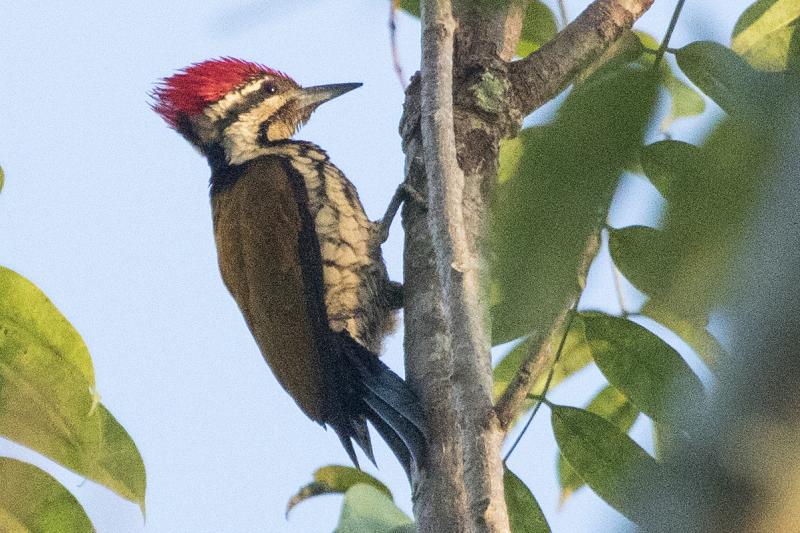
Common Flameback
A very different method of communication, I listened to the very loud drumming of a woodpecker, near Kaen Krachan National Park, Thailand. It was a common flameback that had found a hollow dead tree to drill with its beak and the drumming sound resonated loudly and was particularly penetrating and travelled a considerable distance. The bird continued to return for repeat performances and may have considered the sound amplification proof of its virility making it an excellent prospect for a potential mate. The flameback in the picture is engaged in feeding from a different tree in close proximity, but it may be the same bird.
Bird Calls and Social Bonding
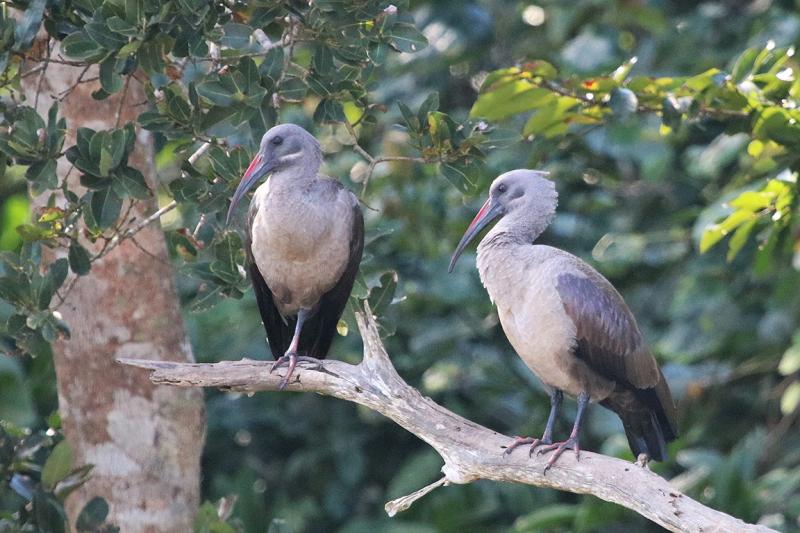
Hadeda Ibis
The call of the Hadeda Ibis is most commonly heard in the early morning and evening when flying to and from its roost. The sound is raucous and apparently the loudest of any African bird as those of us who have had a rude dawn awakening know to their cost. Again, the name hadeda is believed to be onomatopoeic. The call has a social function, enabling the hadeda to communicate both with its mate and with other members of its species in a reciprocal bonding exercise.The pair above were photographed in St Lucia Wetlands, Kwa-Zulu Natal, South Africa.